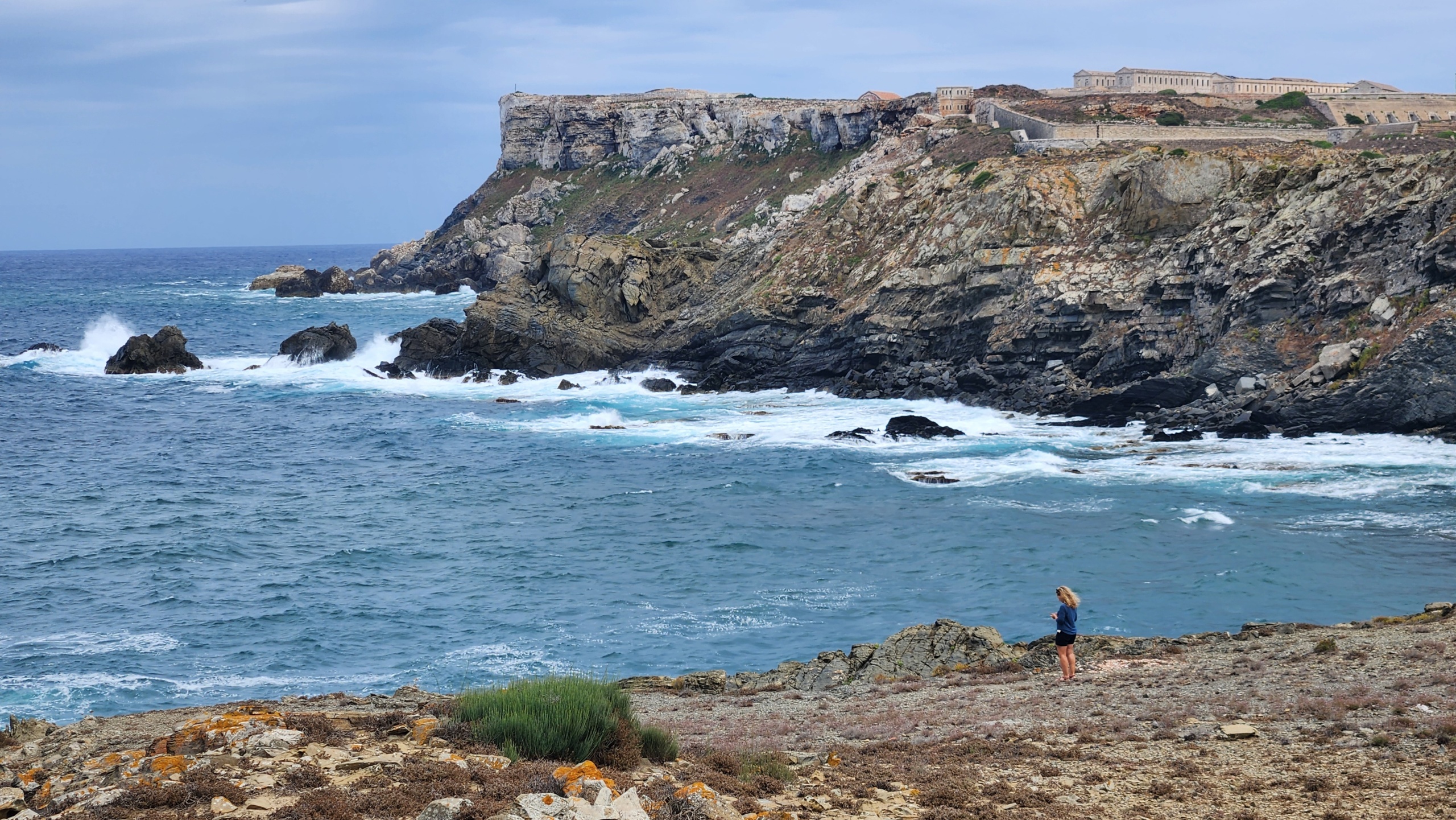For the number of weeks that we have been out sailing this season, you’d think we’d be more on top of these blog posts. But somehow the days and weeks slip by, and suddenly it’s been over a month since our last post. And then there’s the fact that it takes me ages to actually finish writing one of these posts. When I started this one, we were sitting in Northern Corsica, listening to the 27-knot winds howl through our rigging… Now, almost 12 days later, we have just arrived in Sardinia anchored in one of the marine parks. Oops!
In order to hurry up and get something posted, I’m going to split this post into two parts. We were only in Menorca for two weeks, so I thought this would be a quick post. But once I started writing, I remembered that it was a very busy two weeks!
The distance from Mallorca to Menorca is about 45 km or 25 nautical miles (depending on where you cross), so we were able to do the crossing in one day (for passage planning, we calculate an average of 5 nm per hour). We left the anchorage in Cala Ratjada, Mallorca, around 8:30am on July 4th, and had a fantastic upwind sail: 15 knots of wind blowing on forward corner of the boat (‘Slightly forward of the beam’ in sailor-speak), with waves small enough that they didn’t slam into the boat and splash into the cockpit. I even managed to do some knitting on the passage, which is a sure sign of good sailing conditions! We arrived in Menorca around 1:30pm, and dropped anchored in Cala es Talaier, a beautiful bay with turquoise water and white limestone cliffs – so pretty that we forgot to take photographs until the evening. When we first arrived, the middle of the bay was blocked by a 60-footish day-tour catamaran, which was unloading it’s 40 or so lobster-tinted tourists into the water for a swim. When they left an hour or so later (looking happy and possibly even more pink!), we repositioned our anchor and moved into their spot, claiming the centre of the bay for ourselves. We put a tarp up over the cockpit to keep out the sun (the summer heatwave was still in full swing), had a long snorkel with the fishies, and then hid in the shade for the rest of the day.
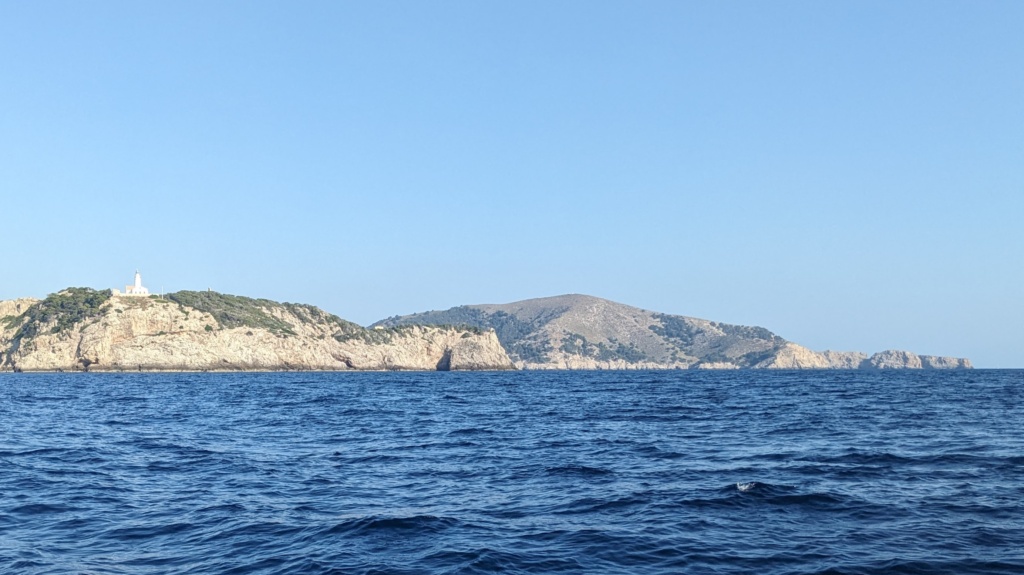

The next morning, we sailed slowly along the south side of Menorca, to a long beach called Playa Binigaus. Mike picked this anchorage because it provides access to a giant cave called Cova des Coloms, a naturally formed limestone cave that’s about half an hour’s walk from the beach. We dinghied to shore around 4pm (when the day was finally starting to feel cooler) and followed the trail off the beach and up into a ravine. As you climb the last bit of hill towards the entrance to the cave, it is impossible to predict what lies inside: an enormous, naturally formed cave measuring 110 metres deep, 15 metres wide, and 24 metres high, similar in scale to a cathedral!
The cave is believed to have been used as a burial site in the period from 500 to 123 BCE: an archaeological dig in 1915 revealed two bronze horns which have been carbon dated to 406 BCE. Its possible that the cave was also closed up with a stone wall at one point, but people in later centuries opened it up to use for shelter – and probably do a little grave-robbing. The floor of the cave also shows signs of having been dug up and possibly used as a quarry, so you can imagine that any grave sites would have been looted many times over the centuries. Still, it’s an impressive place to visit, and to think about all the generations of people who have used the place as shelter from the elements.


At this point in our travels, we had been dealing with a heatwave for several weeks. Every day we had been seeing temperatures in the mid-30’s Celsius, with very little wind. The forecast, however, was finally showing an end to the heat, in the form of big northerly winds and possibly some rain. With this in mind, we spend Sunday morning motoring (no wind!) to the east end of Menorca, into the harbour of Mahón (Maó in Catalan). Despite being known as the largest natural harbour in the Mediterranean, this 5-kilometer-long bay offers only one free anchoring location: in a small bay on the north side of the harbour entrance, with a 19th century Spanish fort on one side, and an 18th century quarantine hospital on the other (built by the in 1793 to confine carriers of the bubonic plague). It’s a beautiful spot, but fairly crowded, and a fair distance from Mahón, which is situated at the very end of the harbour.
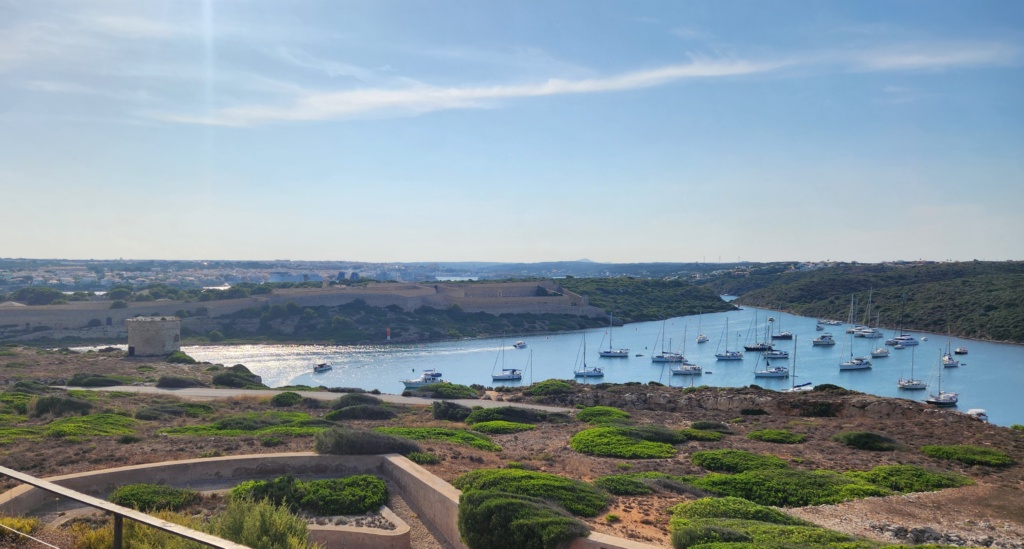
On that first day, we braved the late afternoon heat and walked up the hill to visit the Fortaleza de Isabel II, a Spanish fort that was built between 1850 and 1875. It was one of the biggest forts constructed in Europe in the 19th century and is in excellent condition because it was never attacked. The territory of the fort really is enormous – we spent an hour and a half touring it and only saw the main battlements – had we wanted to see the more modern guns at the far end, we would probably have had to rent one of their golf carts in order to see it all before closing!
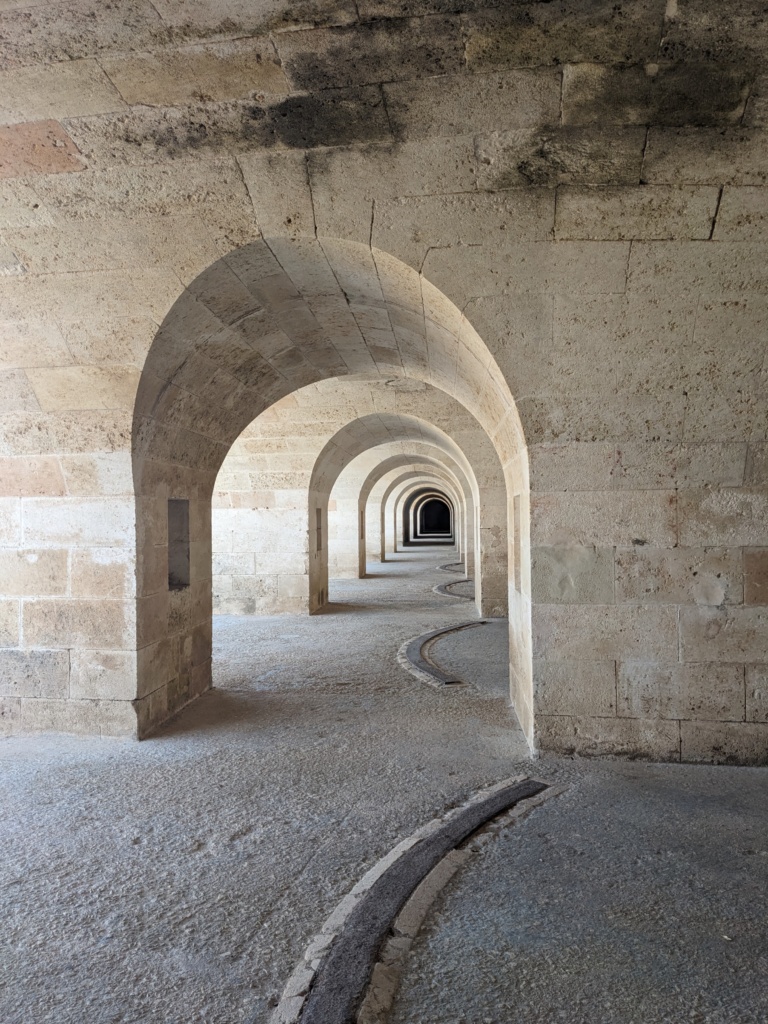
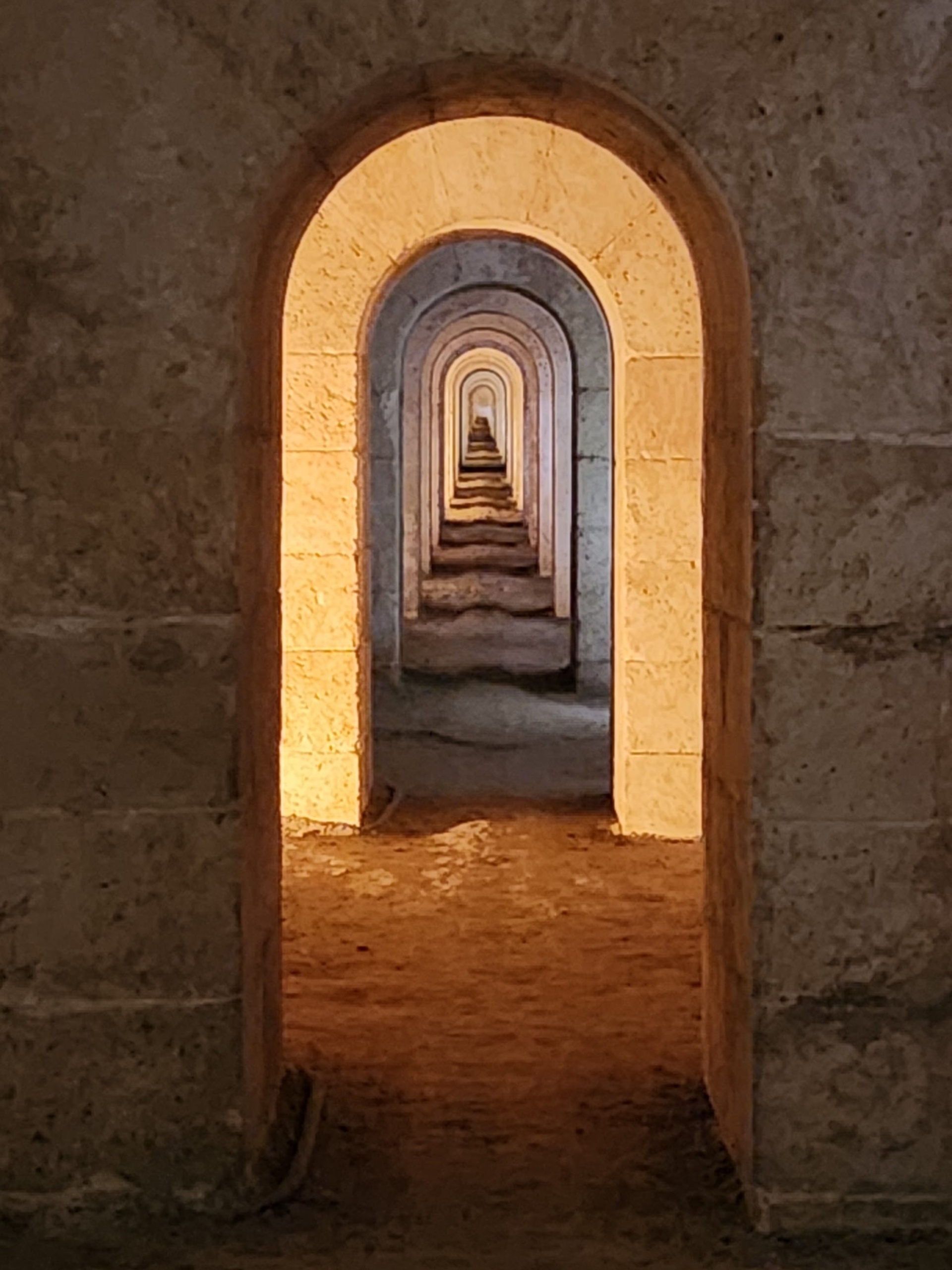
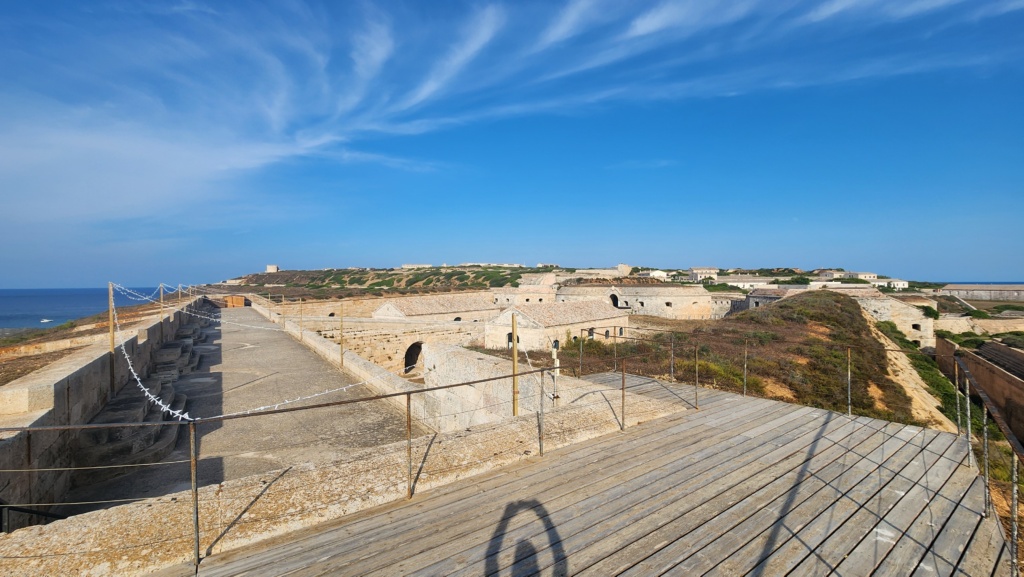

The fort has two large defensive walls that face the harbour (to protect from water attacks), and several more that defend from potential land attacks. These redouts have three interior levels, fronted by a large moat. Underground passages connect these buildings and provide storage areas for supplies and gunpowder. One of the land-facing redoubts is 390m long, and contains an underground gallery consisting of 48 rooms, with 2 windows for spotting (and shooting at) any attackers. The rooms are linked together in a straight line – as you walk through them, you quickly lose all sense of the length of the hallway – it could be just two rooms to the end, or fifty-two!
After walking as far as the Princess tower (inherited from the British outposts built here in the 18th century), we decided to head home for dinner. Looking back at the tower from the anchorage, you can see how well the fortifications were blended into the hillside. What looks like a smooth hill, is actually cut in half vertically by a 2km moat!
There was no sign of the predicted storm on Monday, so we hopped in the dinghy and motored across to the village of Es Castell, just across the harbour entrance from our anchorage. We tied the dinghy to the public dock and then walked along the cliff tops to Mahón. The historic centre of Mahón mostly dates from the British occupation of the island in the 18th century. Many of the public buildings were built in the Georgian style, with symmetrical features and simple, classically inspired façades. Many of the downtown buildings were once row-houses, also built by the British. And then there’s the local Gin manufacturer, Xoriguer, whose origins date to the British occupation in the 18th century. A few samples from there, and it was time to catch a bus back to Es Castell… and squeeze in a little grocery shopping on the way home.
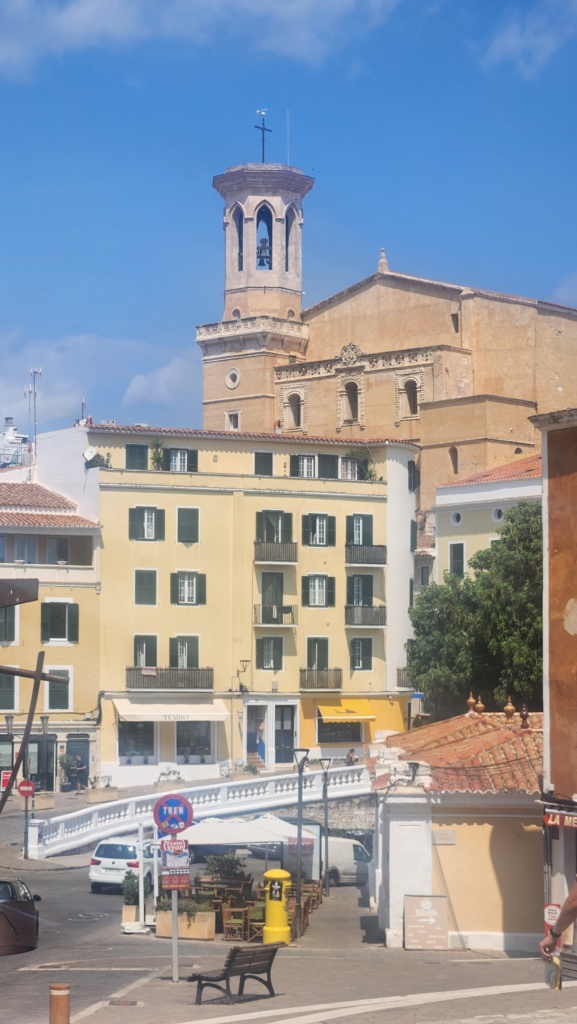




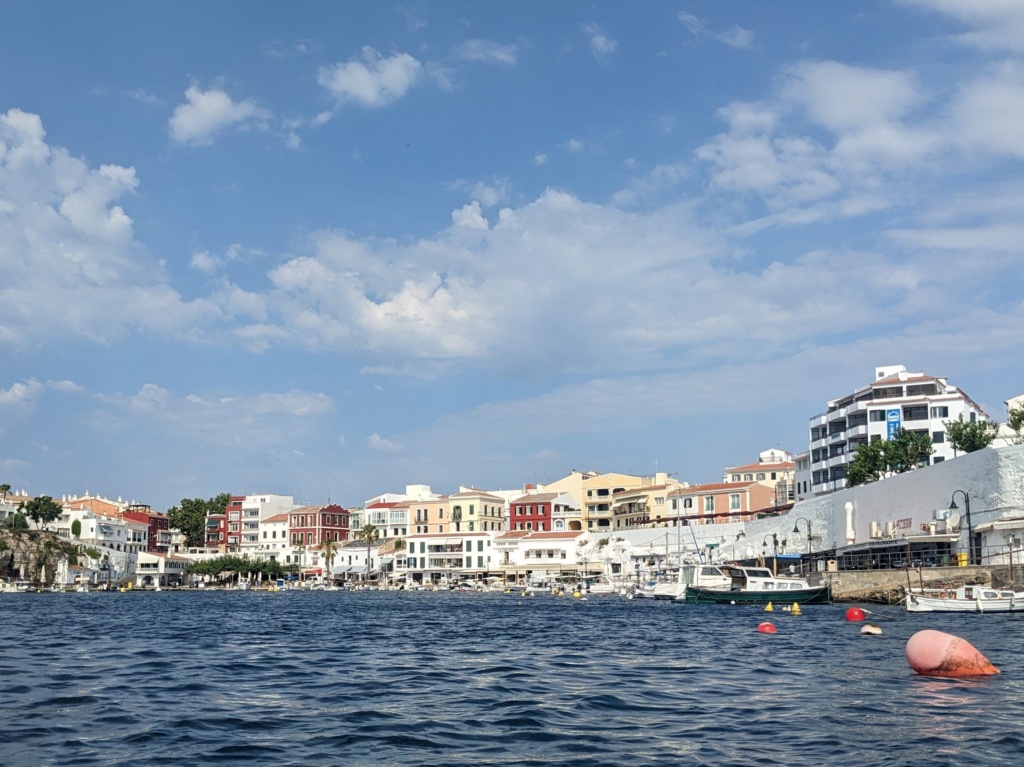
One of our goals while in Mahón was to get our sail bag repaired (the sail bag is attached to the boom and zips up over the main sail when its not in use. After 4 years of exposure to UV and salt, however, the teeth on the #15 zipper had peeled right off the fabric they were attached to. Sailing connections had recommended an upholstery shop in town, and we were able to set up the repair – it just took a little time to have a replacement zipper sent out. In the meantime, we spent a day taking the sail bag off the boom, and then going over the main sail in detail, checking it’s stitching, patching up wear spots, and babying it a bit to help it last a little longer. We dropped off the sail bag on Thursday morning, then spent the afternoon visiting the Mahón Museum. And on Friday, we sailed off into the sunset…
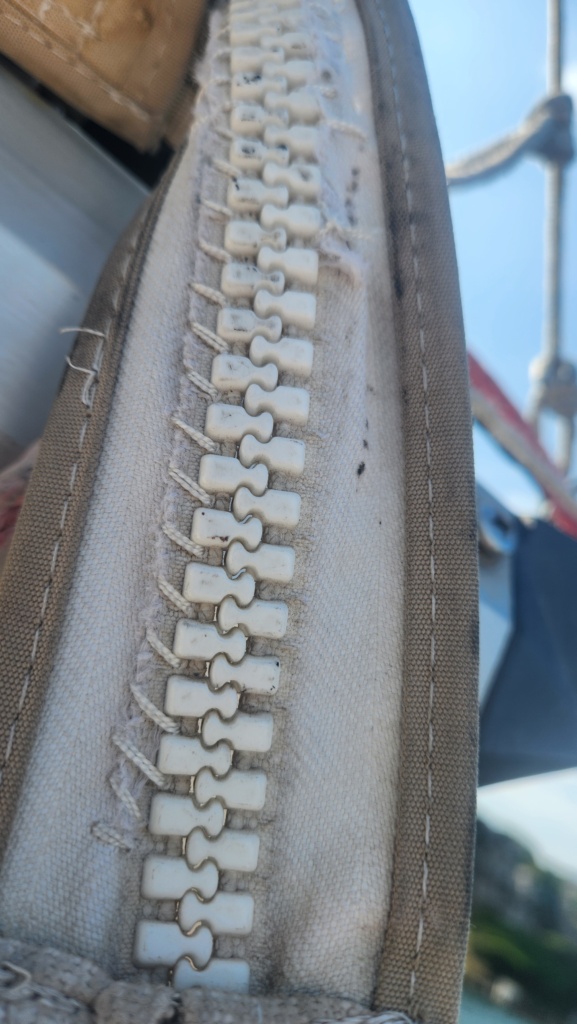
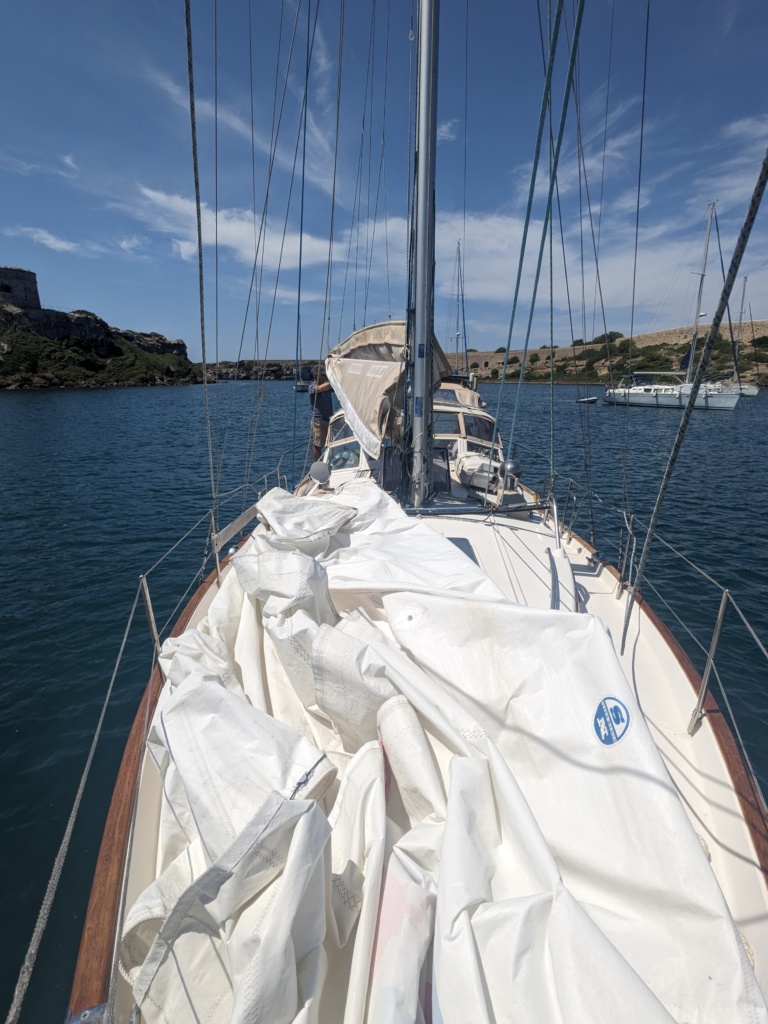

Okay, no. Not really. On Friday we left Mahón and sailed north around the island because we needed to make more water and didn’t want to do that in the slightly muddy water of the Mahón anchorage. But that’s a story for a different post, because otherwise I will never get this one posted!
